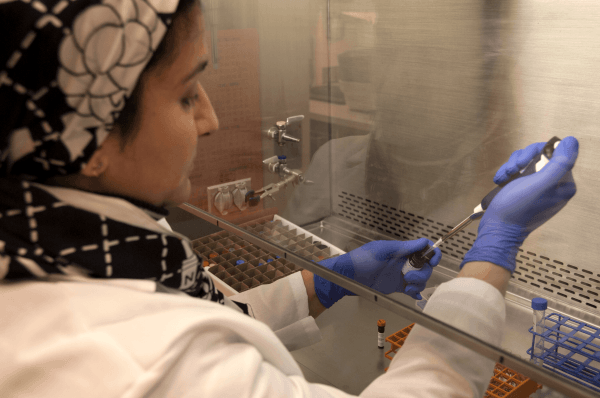Stem cell research has blown up in recent years and has made some truly incredible strides ever since Shinya Yamanaka was awarded a Nobel Prize in 2012 for his work on the technique of converting adult skin cells into pluripotent cells, immature stem cells that have the potential to transform into nearly any cell in the body.
Recently a press release from Ohio State University and a report from the 2015 Military Health System Research Symposium in Ft. Lauderdale, Florida have revealed the ability to grow a miniature brain in the lab. Although this brain is less than four millimeters in diameter, it is equivalent in development to the brain of a nine-week-old fetus in utero. The miniature brain was given the name “cerebral organoid”.
Previously, scientists grew brain tissue on a two-dimensional scale by culturing cells on a flat nutrient plate. However, the lab brain grown by Rene Anand is three-dimensional due to the usage of a drop of nutrient gel. By using the gel as a scaffold, the cells were able to organize themselves into the complex 3-D structure of an embryonic brain. This pencil eraser-sized brain has the identifiable structure of a human brain and contains 99% of fetal genes. Although this may seem too small for feasible research, Juergen Knoblich of the Institute of Molecular Biotechnology in Vienna states, “At this size, they can hold quite a lot of complexity … this is one of the cases where size doesn’t really matter”.
Image Source: Science Photo Library – SCIEPRO
This model was created by converting human skin cells into pluripotent stem (iPS) cells and providing the cells with an optimal environment of chemicals and nutrients to support brain development. While the vascular system is missing from this brain model, many recognizable features are present, including a spinal cord, signaling circuits, major regions of the brain, and multiple cell types.
This opens up many new doors for neurobiology research. Because the cerebral organoid has no sensory input, it has no consciousness or self-awareness; thus, there are no ethical issues to consider. The major discovery can be used in the future to model different human diseases including microcephaly, autism, and schizophrenia. Additionally, it raises the possibility of directly testing drugs without the use of animals.
Featured Image Source: U.S. Food and Drug Administration










